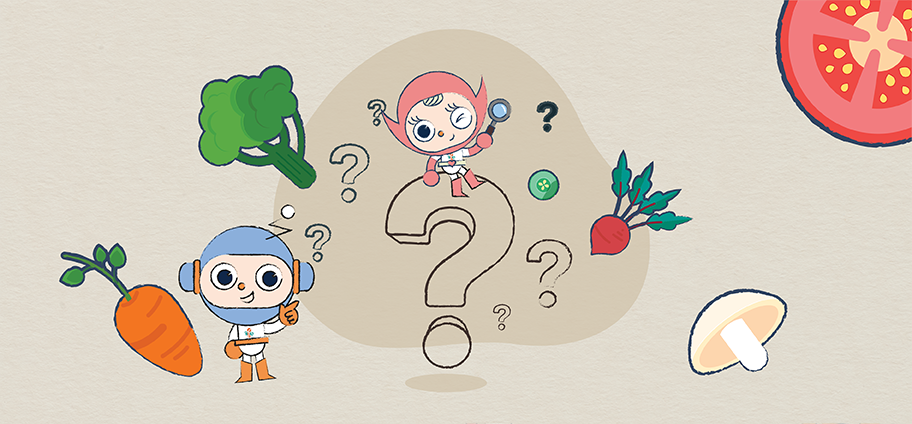
Can infants eat honey?
Feeding infants honey can cause infant botulism.
Infant botulism, first recognised in 1976, is caused by the ingestion of the Clostridium botulinum spores that germinate and grow in the intestine of infants and release toxin. Honey, which may be contaminated with the spores, is implicated in some cases. It is not known how honey becomes contaminated with Clostridium botulinum. Spores of Clostridium botulinum, which are commonly found in environment, may be picked up by bees and brought to the hive.
Infant botulism rarely happens to persons over one year old as the better developed natural microbiological flora in their intestines do not favour the germination of the spores. Early symptom of infant botulism is constipation, followed by lethargy, difficulties in feeding, generalised muscle weakness and weak cry. While most cases require hospitalisation, fatal cases are rare.
Therefore, the CFS recommends parents to:
- Avoid feeding honey and honey products (e.g. candies with honey) to infants less than one year old.
- Honey should not be added to baby food or used on a soother to quiet a fussy or colicky baby.
Please refer to 《Botulism and Honey》for further details.
Is Smoked Salmon raw or cooked?
Smoked salmon can be prepared by hot-smoking or cold-smoking. In hot-smoking, salmon is smoked at around 70-80°C to cook the flesh. However, in cold-smoking, salmon is smoked at no higher than 33°C to avoid cooking the flesh or coagulating the protein. Therefore unlike hot-smoking, cold-smoking is generally insufficient to eliminate but only reduce the level of Listeria monocytogenes, a bacterium which is ubiquitous in the environment and may also be present in raw salmon at low levels.
L. monocytogenes is a bacterium which is ubiquitous in the environment and may also be present in raw salmon at low levels. In addition, the extensive handling of salmon, for example slicing followed by cold-smoking, also provides ample opportunities for L. monocytogenes to cross-contaminate the products if inadequate attention is given to the Good Hygienic Practices. Ready-to-eat cold-smoked salmon may allow L. monocytogenes to grow slowly throughout its relatively long refrigerated shelf-life. Its contamination with L. monocytogenes, even with small quantities, is therefore of particular concern. Various food recalls due to L. monocytogenes contamination in cold-smoked salmon have been reported all over the world. There is also indirect epidemiological evidence associating contaminated smoked fish and human listeriosis cases.
Therefore, susceptible populations should avoid consuming ready-to-eat foods with long shelf-lives under refrigeration (e.g. cold-smoked seafood including salmon, soft cheeses and deli meat). The public should store smoked salmon strictly in accordance with the instructions on the labels, and avoid consuming smoked salmon beyond its "use by" date.
Please refer to 《Cold-smoked Salmon and Listeria monocytogenes》for further details.
Can we taste raw flour dough or batter?
Raw flour dough and batter are not heat treated, and therefore they are high risk food. There had been recall of flour products overseas due to possible contamination with Shiga toxin-producing Escherichia coli (STEC) and some people, who had eaten or handled the raw dough, got sick. Consumption of undercooked foods and foods that has been contaminated by E. coli can lead to gastro-intestinal diseases. Some people may also develop intestinal bleeding and serious complications such as haemolytic uraemic syndrome (HUS). E. coli cannot survive under high temperature and can be killed by thorough cooking. Consumers should not eat or taste raw flour dough or batter.
Please refer to 《Shiga toxin-producing Escherichia coli Contamination in Prepackaged Flour》for further details.
Are sandwiches high-risk food?
From the perspective of ingredients and production, sandwiches are indeed high-risk food.
Some high-risk ingredients, such as raw vegetables, eggs and salad dressing are commonly used in sandwiches. Pathogenic bacteria present in the soil or water may come into contact with raw vegetables during the growing stage. In addition, raw vegetables may also become contaminated after they are harvested, such as during preparation or storage. Properly cooked eggs are safe while undercooked egg may harbour Salmonella bacteria. For salad dressing, it may be prepared in advance and can become a source of contamination if not handled and stored properly. In addition, some salad dressing may contain raw egg as an ingredient.
As sandwich preparation often involves manual handling of ready-to-eat ingredients, good personal and environmental hygienic practices should be observed to minimise the chance of cross contaminations. Common pathogens transmitted through bare-hand handling include Staphylococcus aureus, which can be found on the human skin.
Prepared sandwiches should be properly stored, especially if they contain ingredients that allow bacteria to grow and multiply. As such, prepared sandwiches with high risk ingredients that support bacterial growth should be stored or displayed at 4°C or below. They should be discarded if stored above 4°C for more than 4 hours. The trade should also make reference to the ‘Guidelines on Safe Production of Buns and Sandwiches’ to produce and sell wholesome and safe sandwiches.
Please refer to 《Microbiological risks of sandwiches》for further details.
Risk of High-risk Foods Who are the Susceptible Populations?
Safer Alternatives Five Keys to Food Safety Tips for Eating Out